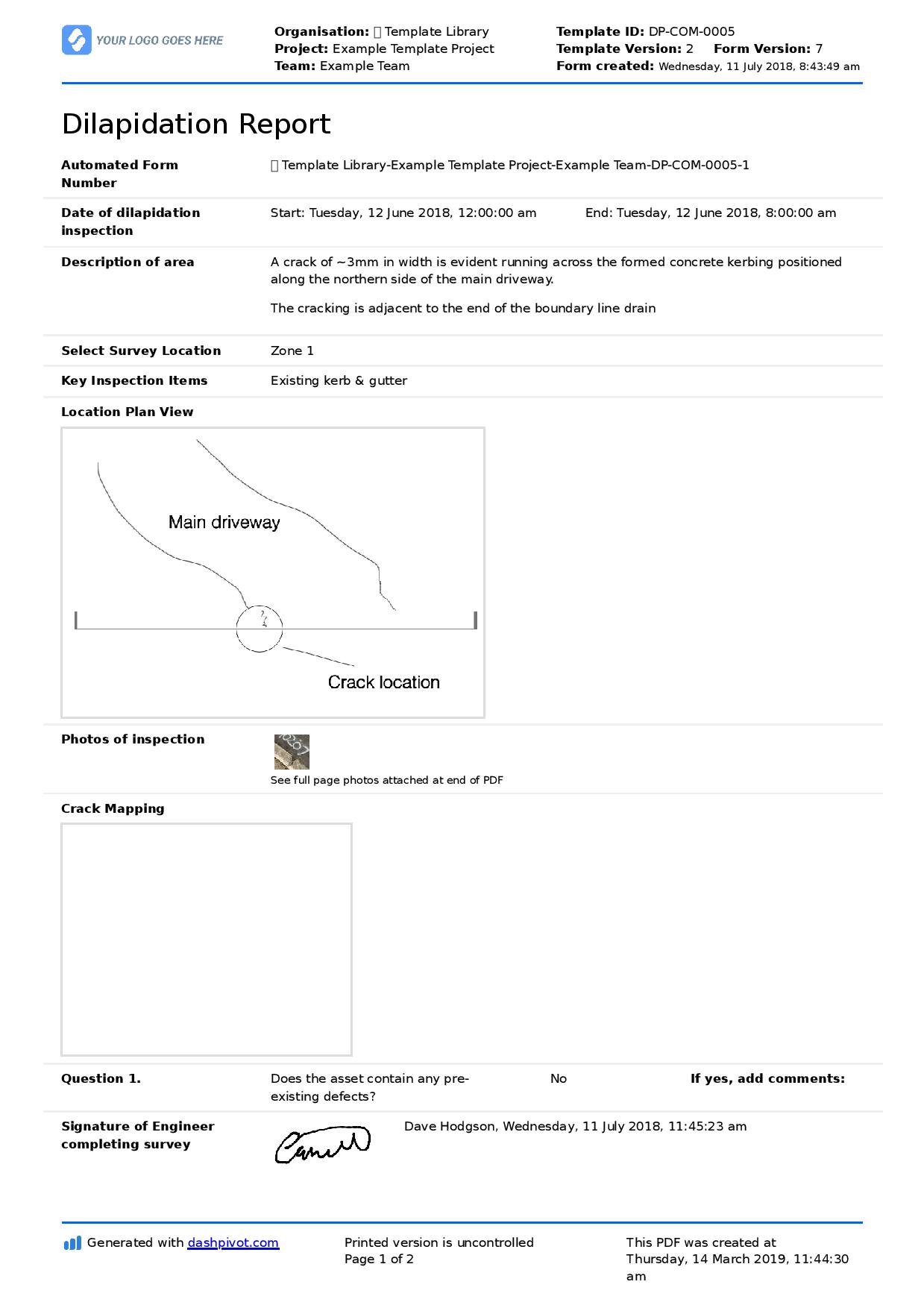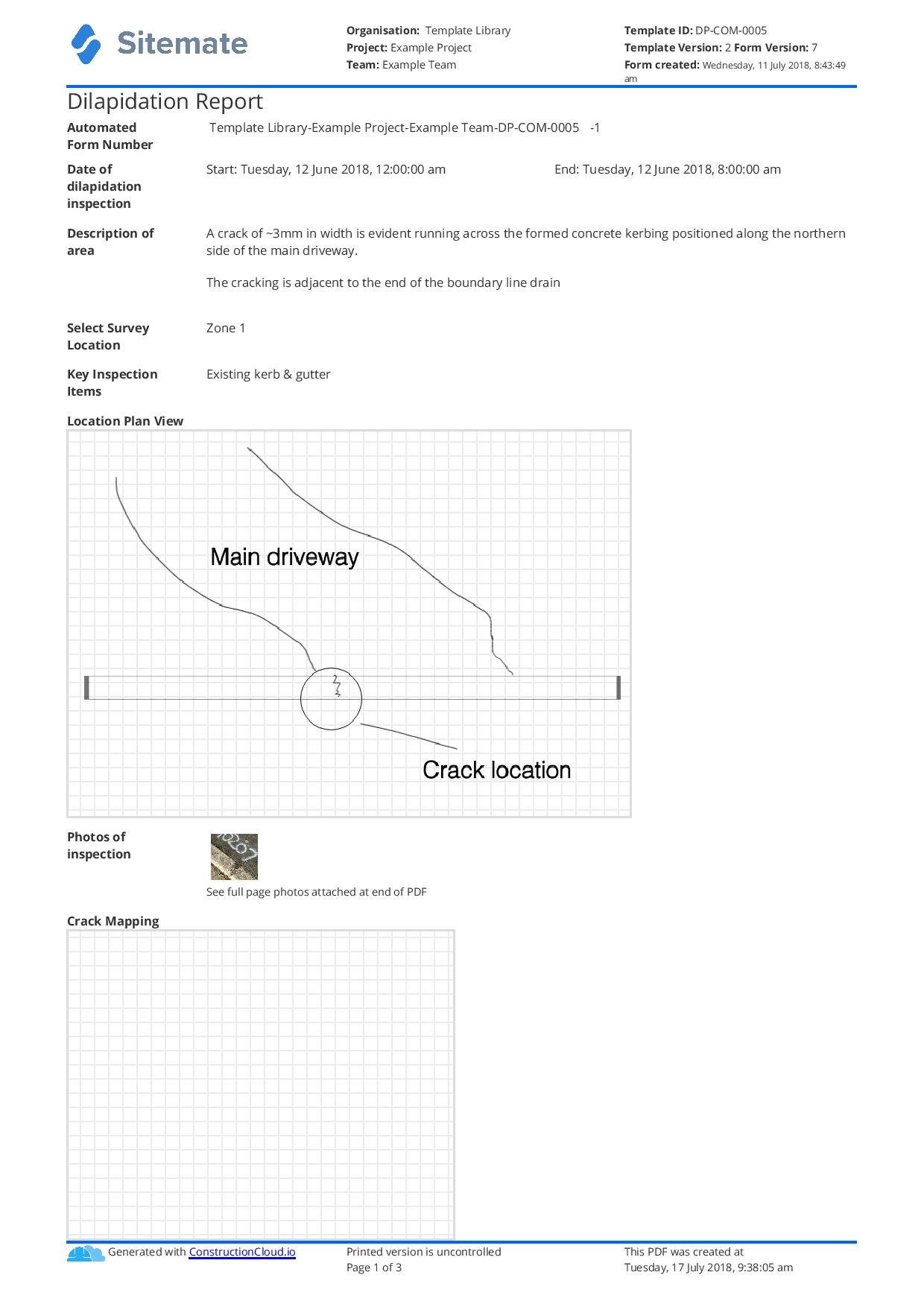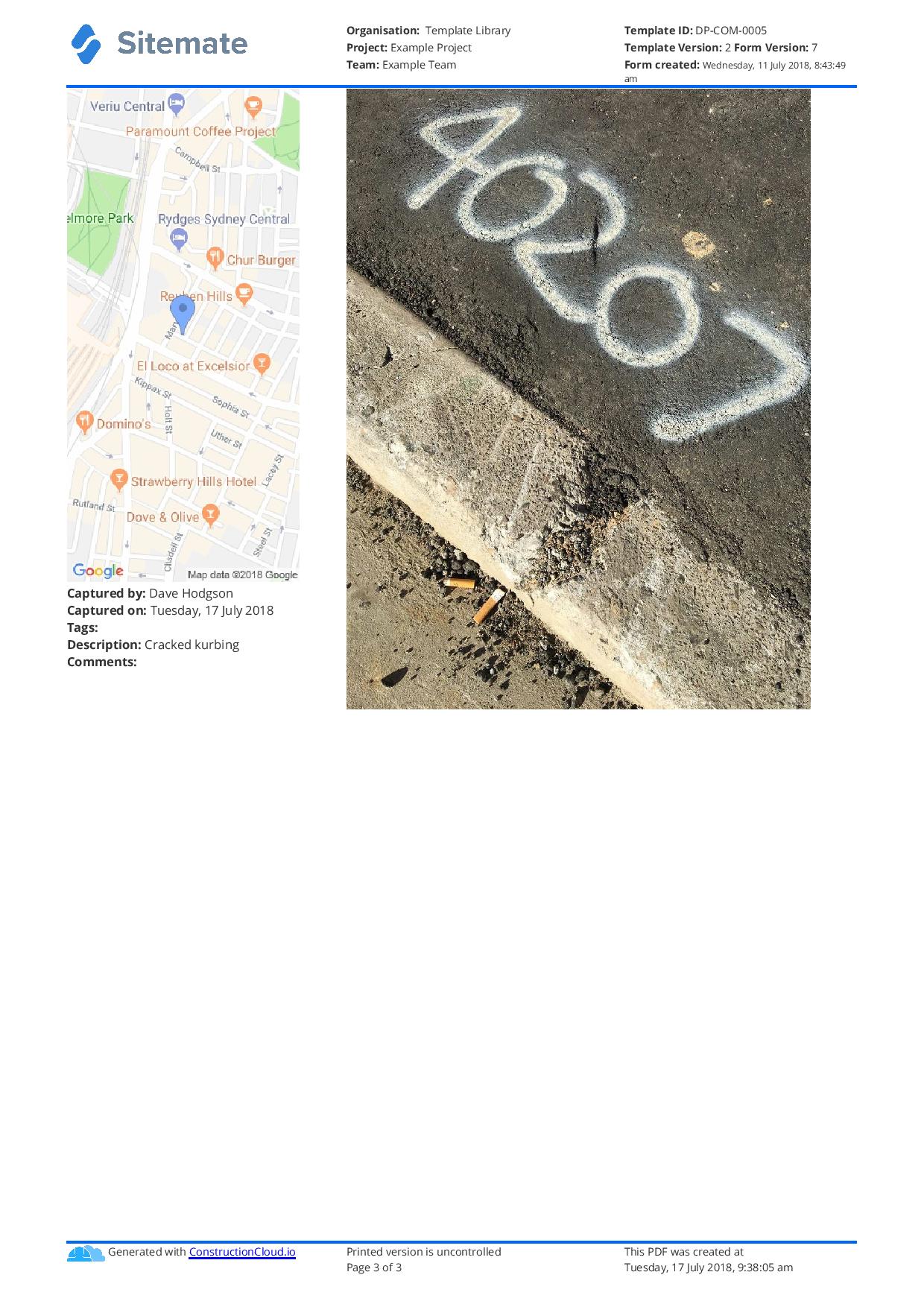Commercial – Dilapidation report sample
Construction dilapidation report sample: Everything you need to include
In this article, we walk through a couple of critical things to know about dilapidation reports in general, before walking through a proven dilapidation report sample and editable framework you can use for your reports.

What is a dilapidation report used for in construction?
Because construction and site works require a lot of heavy machinery, equipment, workers and moving pieces, there is often damage inflicted to the surrounding property or properties. Some of this damage is temporary in nature, while some of it is inevitable wear and tear. But it's incredibly important for all parties - prior and during construction - to understand, document and agree upon the current state of buildings, surrounding infrastructure and other assets which might be affected during construction works.
A dilapidation report is a report which highlights the existing condition of a property at a given point of time. It documents the existing damage of that property or infrastructure, and the state of any aspects of that property which might be affected by the construction work, excavation or demolition which is set to take place.
Dilapidation reports are typically documented prior to construction commencing in order to get a pre-work snapshot, as well as after the project, to summarise the post-construction condition of the asset, even if there were no complaints or obvious damages caused during the construction phase.
This helps to create a full and provable record of the unforeseen or unintentional impact that works had on surrounding buildings and infrastructure.
Why are dilapidation reports important?
Dilapidation reports are incredibly important for construction projects, construction companies and other stakeholders involved in construction works because they serve as the single source of proof for the peripheral damage (or lack thereof) occurring as a result of construction works.
Construction sites are often big areas, and they are often in heavily built-up areas or areas where a number of people travel, move and live. In the chaos of a construction site, it's easy for a truck to reverse into a building or for a pack of bricks to chip the next door neighbours letter box.
It's also easy for a local resident to claim that his letterbox 'wasn't chipped like this' a few weeks after construction has begun - even if it was.
Dilapidation reports serve as the proof - accompanied by photos, videos and signatures - of the pre-construction and post-construction condition of an asset. This way, all parties can reference the pre-construction state and say with relative certainty whether the damage or defects of an asset were caused by the construction works.
Here's a great dilapidation report sample
The dilapidation report sample below is a report which highlights the existing damage of some residential kurbing. As has been illustrated in the sketch and attached photo, the kurb was already cracked prior to work beginning. This dilapidation report would guarantee that that specific crack wouldn't be claimed or complained about during or after the project.
The kurb was in that condition prior to works commencing, so the construction project and site should not be held responsible for the rectification of the kurb.
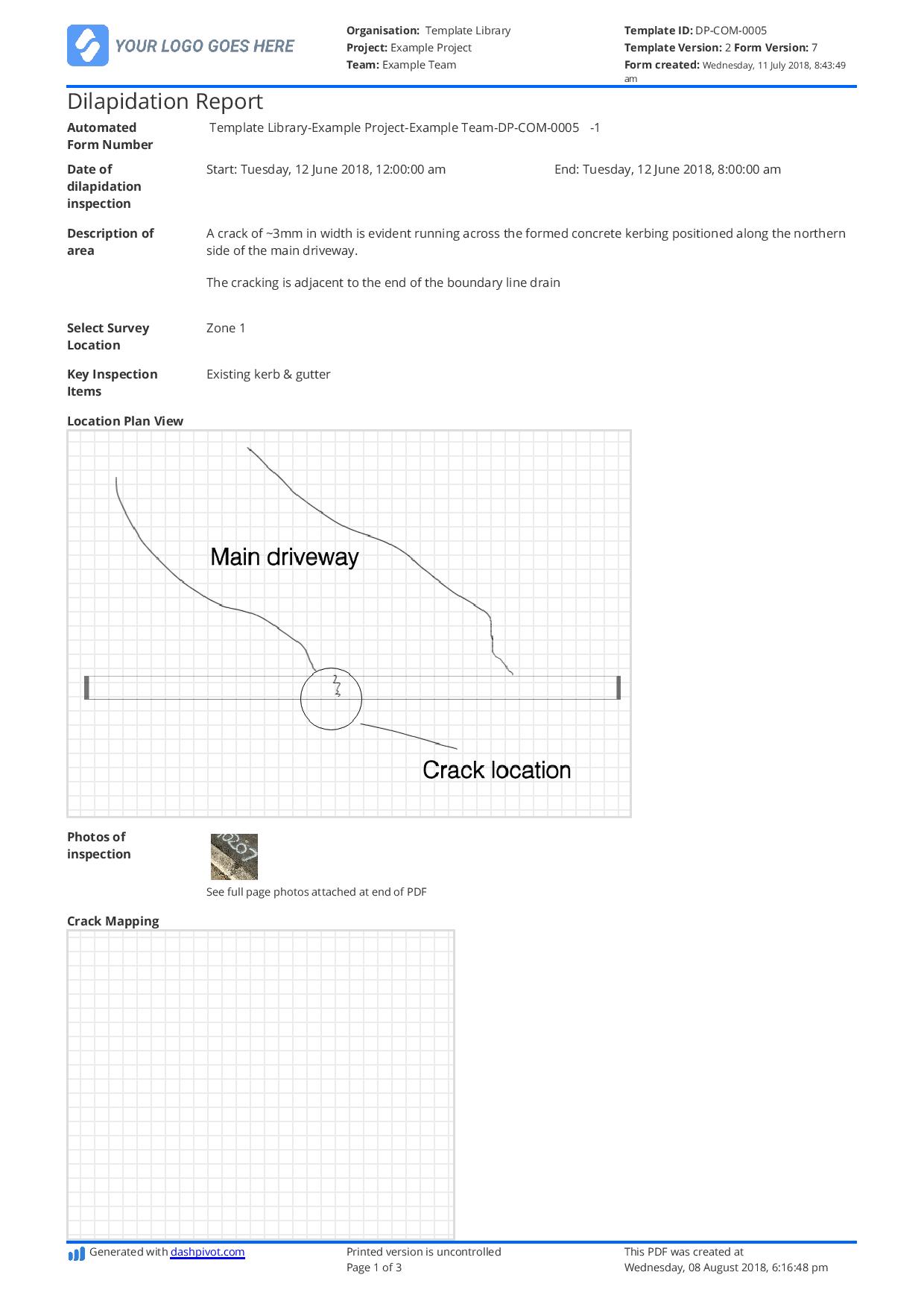
Use this dilapidation report template for free now.
So what needs to be in your dilapidation report?
Keeping your dilapidation reports as standardised and systematic as possible enables to keep more consistent records across your projects and helps ensure that you can always support your claims.
Your dilapidation report template should remain largely the same, and how you fill that template in may change slightly from project to project or asset to asset.
The consistent and necessary form fields on any dilapidation report include:
- The date of dilapidation inspection - critical to providing proof as to the condition of the property on that exact date, which can be reference against the start date of the project or specific deliveries in that area etc.
- Description of area - A more detailed description of the area where the dilapidation was recorded for context, and for a better understanding of what else might have impacted the condition of the documented asset
- Key inspection items - What were the actual items which were being inspected? Was it a kurb or a wall?
- Location plan view - For some dilapidation inspections, it's helpful to draw a sketch of the area of item being inspected. This can help with understanding where the dilapidated fits into the overall site or property landscape
- Photos of inspection - Photos tell more than 1,000 words when it comes to defects and dilapidation reports. Adding a supporting photo or video is critical to proving the exact state of an asset
- Does the asset contain any pre-existing defects? This question will serve as a point of reference in the case of a claim or dispute later on. An engineer or inspector can easily point to this checkbox question and show evidence of the pre-existing damage.
- Signature of engineer completing survey - A dilapidation report showcasing prior damage must be signed in order to carry any weight. Always sign off on dilapidation reports to prove the record is legitimate and can be substantiated.
You may want to add a few additional question or details to your dilapidation reports, but if you document all of these things with consistency and accuracy, you will be in great shape with your dilapidation record keeping.
How to improve your overall commercial construction outcomes
Dilapidation reporting is just one component of your commercial effort. Other commercial jobs require an equal or greater amount of effort to document, organise and analyse.
If you are looking for a way to streamline your commercial tasks and decrease company risk and unnecessary revenue loss, take a look at Dashpivot's commercial management software or dedicated dilapidation report software.
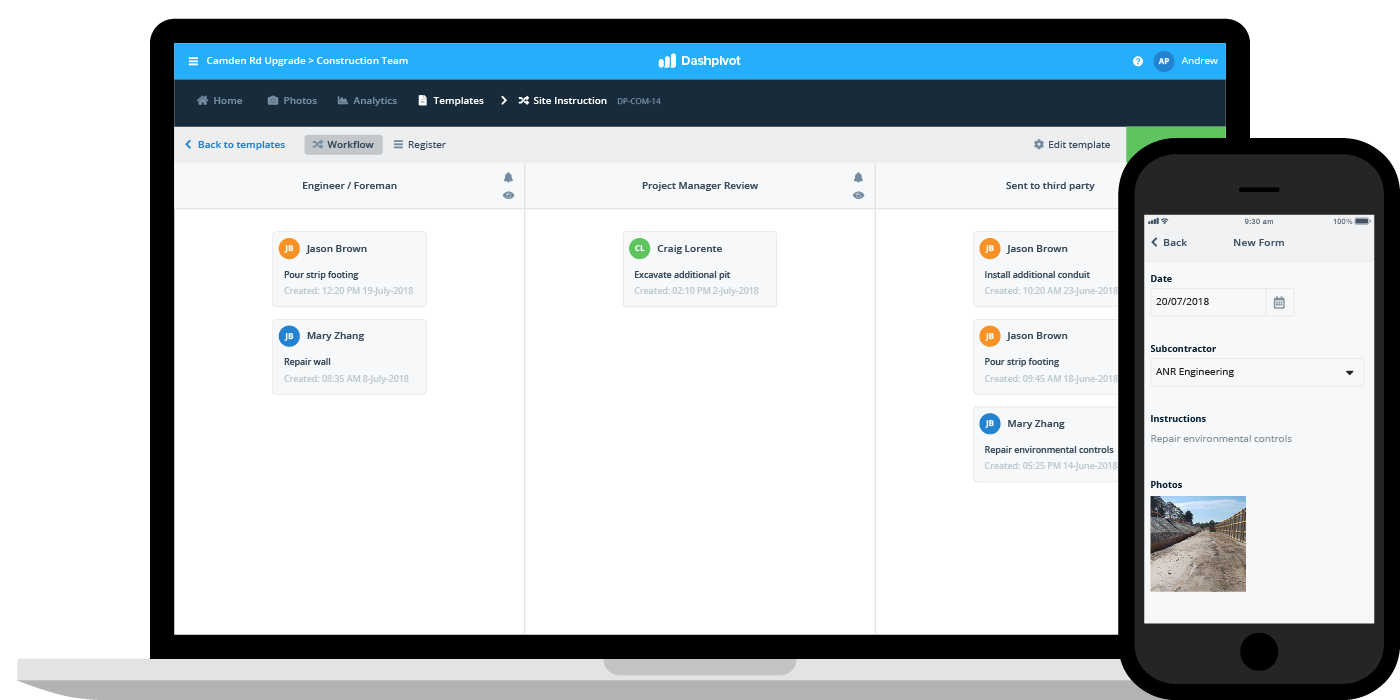
The software can take care of all of your site information record capture, automate frustrating admin and time-consuming workflows, and bring complete transparency to daily progress, change events and other critical commercial information.
Or if you just want to solve your dilapidation reporting problem for now, then get started with the dilapidation report template below now.

Dilapidation report
Use and edit this dilapidation report for yourself
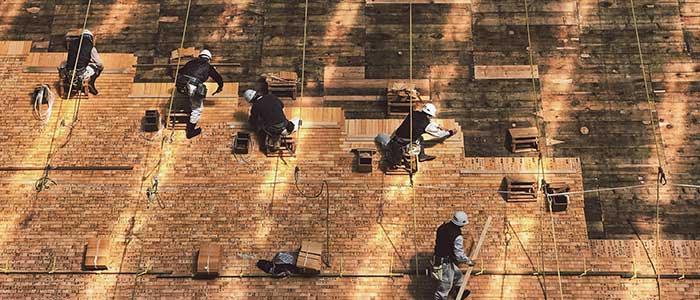
Site daily progress report
Streamline how you capture daily site progress from site

Construction variation
Manage variations on projects in a smooth streamlined way
